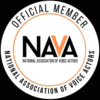Maria Pendolino is an award-winning voiceover actor and outdoor RV-ing enthusiast who has found a way to make camping more accessible despite living with psoriatic arthritis. When she’s done voicing commercials, promos, and documentaries in her voiceover booth, she enjoys visiting state and national parks with her husband Eric and her nieces and nephews. Whether you call it camping or glamping the outdoors *can* be accessible to everyone with just a little research, support, and effort.
Here are Maria’s top seven tips for making outdoor adventures accessible and enjoyable for everyone, especially people with disabilities.
View this post on Instagram
1. Choose the Right RV or Tent Layout
Look for an RV or tent setup that prioritizes accessibility, or that is more customizable. Opt for models with wider doorways, existing ramps/ramp add-ons, and easy-to-access sleeping areas. Many RVs, like those by Thor Motorcoach, can be customized to suit your needs. Speak with a sales rep at a local RV dealership about what might be possible both before and after purchase.
2. Rent Before You Buy
If you’re new to camping or RV travel, consider renting equipment for your first trip to ensure that the layout and features accommodate your specific needs and disabilities. Renting allows you to test different setups to find the one that best supports your comfort and accessibility needs, making for a more enjoyable and stress-free outdoor adventure. It’s amazing how many different configurations there are for both RVs and tents/accessories. Try before you buy is a great way to make sure that you’re not left with an expensive purchase that you’re unable to use to the fullest.
3. Customize for Comfort
Consider adding modifications like handrails, person lifts, or even bidets in RVs for added comfort, hygiene, and mobility ease. Again, there may be more options than you think! Also, for RV users, be sure to test out the restroom facilities before purchasing a unit. Some RVs have a full 3 piece bathroom, others have a water closet for the toilet, with shower and sink separate. Depending on your needs and range of motion, one may be more preferable for you over another!
4. Opt for Accessible Campsites

5. Pack Essential Mobility Aids
Ensure your trip is comfortable by packing essential aids like folding cots, portable ramps, or supportive seating to enhance accessibility at your campsite. If you end up purchasing your own RV unit or tent & camping kit, you may find it’s easiest to just duplicate your favorite aids from home.
6. Plan for Accessible Outdoor Activities
Many parks provide accessible recreational options, including beach and water wheelchairs or beach mats designed for wheeled devices and easier walking. These amenities make it easier for everyone to enjoy the natural surroundings fully. Be sure to call ahead to confirm the availability of these options, as they may be limited or require advance reservations. As an example, check out the awesome Mobi Mat that is installed at Hamlin Beach State Park outside of Rochester, New York.
7. Prioritize Comfort During Sleep
For tent camping, using a folding cot with an air mattress can improve sleep quality and make it easier to get in and out of bed, especially for those with mobility issues. For RV users, be sure to test out different bed height configurations and layouts. Sometimes beds are tucked into corners in units that make it difficult for those with mobility challenges to get in and out of.
A Message for RV Manufacturers:
When designing accessible RVs, talk directly to disabled individuals about what they need, rather than assuming. Understanding the real challenges disabled campers face can improve design and functionality. Maria loves her Thor Motorcoach “Vegas” RV, which has made her outdoor adventures accessible and enjoyable, but there’s always room for improvement in making RVs even more adaptable for all.








